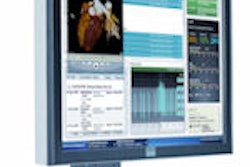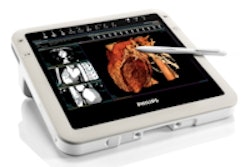CHICAGO - A Web-based, real-time radiology dashboard can provide valuable information for radiology practice management, quality assurance, and patient care, according to research from Massachusetts General Hospital (MGH) in Boston.
"[This] dashboard is a novel way of continuously gauging the performance of the department and provides real-time or near real-time data," said Dr. Pragya Dang. She presented the study team's finding during a scientific session at the 2008 RSNA meeting in Chicago.
Monitoring and managing the day-to-day operations of a radiology department can be very beneficial in radiology practice management and quality improvement. However, this information -- such as workflow, throughput, report turnaround times, or exam volume -- is usually provided via retrospective static reports. Availability of this information in real-time or near real-time could play an important role in improving the radiology practice, Dang said.
As a result, the researchers created a secure, real-time radiology dashboard, leveraging the iGoogle publicly available Web-based personalized desktop (Google, Mountain View, CA). The desktop application provides key information about the radiology department in the form of graphs, charts, tables, dials, and other formats.
In creating the radiology dashboard, the MGH team first had to define the data sources (aggregated data in data warehouses or live systems such as PACS or RIS). Next, the study team designed efficient SQL queries for these sources. Standard reports and views were then defined to visualize the queries, utilizing various Web services to display the results in different visualization formats, Dang said.
The researchers then created Google "gadgets" -- Web components that can be used to carry key information such as graphs and charts. These gadgets are used to personalize the iGoogle page based on user requirements and interests, and they can easily be plugged into different Web applications, Dang said. Each gadget has a unique URL.
The dashboard provides password protected access to radiology data only within the firewall on the hospital intranet, Dang said. The gadgets will only appear if the user is inside the firewall, she said.
Users can choose the information that is of interest to them, as well as modify the iGoogle page based on their personal preferences, she said.
"[For example,] in a dashboard for the GI radiologist, they want to look at different exams in the preliminary status or unread status and they only choose those particular gadgets," she said.
Real-time data are constantly updated, from every 10 seconds to several hours depending on the data being analyzed, she said.
The dashboard provides access to information that is useful for administrative purposes and clinical evaluation, Dang said.
"And since it's accessed and distributed using this publicly available dashboard, it can be easy to distribute and share across the department," she said. "Minimal resources will be required to build these dashboards for presentation, because we're using a publicly available desktop."
By Erik L. Ridley
AuntMinnie.com staff writer
December 1, 2008
Related Reading
Home-grown databases assist radiology administrators, July 31, 2008
Tracking radiology performance with a dashboard, September 10, 2007
Copyright © 2008 AuntMinnie.com




















